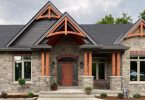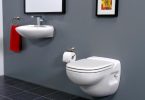Text by Orville Giesbrecht
Wood heat is the topic of much discussion at this time of year. Wood heat is easily dealt with if you as a client ensure that your installation is properly completed. Before you have your wood heat installed it is advisable to give your insurance agent a call regarding the requirements necessary to insure your system.
There are many different types of wood heat on the market. One of the more popular methods of wood heat is a wood stove. In order to insure a wood stove, the insurance company looks for an approved twenty-one hundred degree stainless steel chimney that is installed to the manufacturer’s specifications. The stove needs to be approved by CSA, ULC or a comparable approved unit. Once again, the stove is required to be installed to the manufacturer’s specifications. These measurements can usually be found at the back of the stove. Please note that each stove will have its own unique measurement requirements.
Next, a non combustible pad is prepared on which the stove will sit. This pad is often grouted tile or bricks. The non combustible pad should come out eighteen inches in the front of the stove and nine inches to the sides and the back.
Connect the stove to the chimney using stove pipe. Most commonly used stove pipes are black single wall or double wall stove pipes. Again, ensure that you are following manufacturer’s specifications when you install the stove piping.
At this time, your insurance broker should be notified for a wood heat inspection. Your broker will forward your insurance request to the designated insurance company and upon approval your broker will give you notice that you are ready to use the wood stove.
Having gotten the okay to fire up your wood stove, light it up and cozy up to the fire on a cold winter’s night!
Latest posts by Canadian Home Trends (see all)
- Dining Room Design Tips - July 13, 2025
- Practical Luxury in Forest Grove - July 13, 2025
- The Hidden Value of Great Design - July 13, 2025






